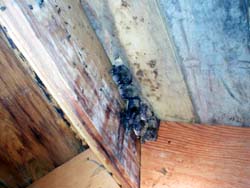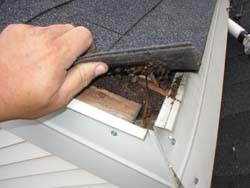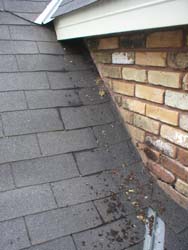|
|
BAT REMOVAL
Bat
distribution
Seven species of bats live in Minnesota, all of them rather small. Four
species (Little Brown Myotis, Northern Myotis, Big Brown Bat, and
Eastern Pipistrelle) form colonies and can be found in groups in caves,
hollow trees, and buildings. These animals typically feed over open
fields, along woodland edges, or over lakes and streams.
Nuisance Bat and Wildlife
Control specializes in
removal of Bats in Mpls,
St Paul
,
St Cloud
and all surrounding
suburbs.
The remaining
three species (Silver-haired Bat, Red
Bat, and Hoary Bat)
are commonly called tree bats, reflecting their preferred habitat. They
lead solitary lives, characteristically roosting in trees and feeding
in or around forested areas.
All Minnesota bats are insectivores. They feed exclusively on
insects—mostly beetles, moths, flies, midges, mayflies, and
to a very
minor degree, mosquitoes.
Symptoms
Scratching sounds, especially at night or real cold or warm winter
days. Chirping sounds that come from the attic, walls or chimney during
June, July or August. A bat in the living area any time of the year
could mean you have a colony living in your house. A concentration of
bat droppings on exterior walls, decks or porches. A concentration of
droppings in your attic or other areas of your house. A urine smell
that come and goes but is especially bad on humid hot days. Seeing bats
fly away from your house a dusk.
Exclusion
Bat proofing is the only way to permanently rid a building of bats. The
process of bat proofing is correcting all the physical and man made
flaws in the building then installing a one way device on the bat
entrances. Nuisance Bat and Wildlife Control DOES NOT install one way
devices until the baby bats are weaned and flying. Exclusion
carried out before the baby bats are weaned and flying will result in
young bats being trapped inside where they will die and create an odor/
pest problem.
 The first
part of getting your house bat proofed is an inspection. Call
763-227-9888 to schedule your inspection or fill out our Bat
Removal Estimate Form.
During this
inspection NBWC will determine what species of bats the house has, what
type of roast it is. What physical and man made flaws we need to
correct and when we can schedule the work. From this inspection we can
determine what the costs will be to bat proof the building. Exclusion
can be very expensive on large buildings or on those having a great
many openings, but most houses that are in good condition can be bat
proofed for a lot less. Bat removal can
also be guaranteed. The first
part of getting your house bat proofed is an inspection. Call
763-227-9888 to schedule your inspection or fill out our Bat
Removal Estimate Form.
During this
inspection NBWC will determine what species of bats the house has, what
type of roast it is. What physical and man made flaws we need to
correct and when we can schedule the work. From this inspection we can
determine what the costs will be to bat proof the building. Exclusion
can be very expensive on large buildings or on those having a great
many openings, but most houses that are in good condition can be bat
proofed for a lot less. Bat removal can
also be guaranteed.
Health Concerns
Because they are mammals, bats can carry rabies. This danger, however,
is very minor. Of the sick bats that are brought in for testing
½ of 1% are tested positive for the rabies virus. However,
to be
safe, never handle bats with bare hands and follow the Minnesota
Department of Health’s guidelines for bat exposure.
Histoplasmosis is another disease associated with some bat colonies.
The disease is caused by inhalation of spores or fragments of the
naturally occurring soil fungus Histoplasma capsulatum. This fungus is
most frequently found in soil enriched by excreta from bats and birds
(especially pigeons and starlings). Human infections occur
through the breathing dust that contains the spores. Some infections
produce flu-like symptoms, but many infections in humans produce no
symptoms or distress.
Parasites
Like all mammals bats may harbor fleas, mites, or ticks. Most of these
bat parasites are highly host specific.

BAT REMOVAL PHOTO GALLERY
CLICK ON THE PICTURES BELOW TO VIEW FULL SIZE
|

